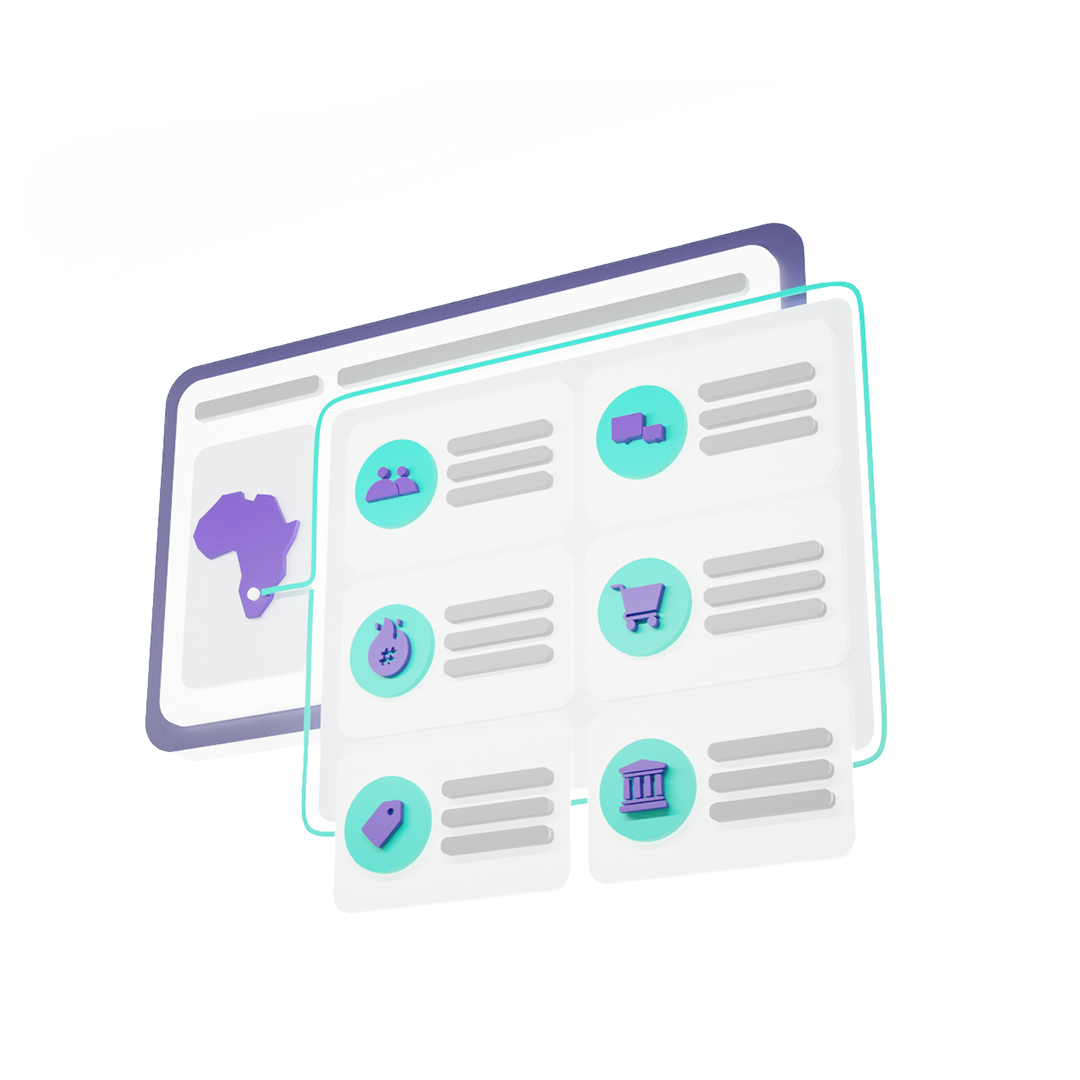In the business world, consumer companies are always looking for ways to better understand their target markets. This is especially true in Africa, where there is a growing middle class with more spending power. Qualitative research for consumer companies has proven to be a way that companies can learn about African consumers and their needs.
Qualitative research involves studying people in their natural environment and observing them as they go about their daily lives. Consumer companies in Africa can use qualitative research to learn about African consumers’ buying habits, motivations, and barriers to purchase decisions. This information can be used to develop marketing strategies tailored to the African market.
Qualitative research takes time and patience, but it can be a valuable tool for consumer companies operating in Africa. Additionally, qualitative research can help companies understand how cultural factors influence consumer behavior. You need to understand the local culture and language of African consumers to conduct qualitative research for consumer companies. Building relationships with potential participants is also essential before conducting any research activities.
According to incafrica, qualitative research for consumer companies involves various techniques that can reveal how people feel about your product or service and how you can improve it to make more money.
What is qualitative research for consumer companies?
Qualitative research investigates the motivations that drive consumer behaviour through observation and unstructured questioning techniques like in-depth interviews and group discussions. The method entails gathering and analysing primary and secondary non-numerical data. The objective of qualitative research is to learn about customers’ values and beliefs as well as the underlying reasons for their purchasing decisions.
Before the launch or development phase of a new product or service, qualitative research asks open-ended questions starting with the words “what,” “how,” and “why” to gather feedback. This method reveals customers’ brand perceptions, buyers’ needs, benefits, and drawbacks of the product or service. Additionally, it aids in the evaluation of promotional materials and the prediction of how the product or service will affect the lives of your customers.
The Internet and mobile devices have brought about numerous changes in qualitative research for consumer companies in Africa. Researchers can now conduct surveys on a much larger scale thanks to the Internet. Marketers can use hyper-segmentation and hyper-personalization to launch targeted advertising campaigns, as well as market research analysis software and social media analysis to gather customer opinions. Let’s take a closer look at the fundamental methods of qualitative research.
Qualitative research for consumer companies: basic methods
Focus groups, personal interviews, social media analysis, observations, lifestyle immersion, and in-home videos, are some of the most common qualitative research methods. We shall discuss each of them below.
Focus group as a method of qualitative research for consumer companies
Focus groups are discussions about a particular product and its marketing strategies. The groups usually have 6-10 people in them and a moderator who encourages them to express their thoughts and feelings about the product. Typically, in-person focus groups are held to study consumers’ verbal and nonverbal reactions to a product or advertising campaign.
This method can be used to test marketing programs, evaluate the overall concept of a product, examine the copy and images of advertisements, and analyze new types of product packaging. In-person focus groups are becoming less popular, while online discussions using video conferencing tools are gaining popularity among researchers.
Social media analysis as a method of qualitative research for consumer companies
Social media and mobile devices provide more opportunities for brands to collect and analyse data. Consumers now interact with brands directly on social media platforms where they spend their leisure time, or sometimes work from. Brands can track consumers’ activities, locations, and frequently used words by analysing the content of Facebook posts, comments, tweets, YouTube videos, and Instagram photos, etc.
You can solicit user feedback, encourage them to complete a brief survey, or communicate with customers about your marketing mix and the development of new products. Furthermore, participants in qualitative research can provide additional contextual information such as photos and videos, which allows for a better understanding of their thoughts and attitudes.
Personal interviews as a method of qualitative research for consumer companies
Individual or personal interviews are typically conducted in person, over the phone, or through video conferencing platforms. The interviewer asks the existing customer a series of questions to ascertain their motivation for purchasing a specific product. One-on-one interviews are conducted as free-flowing conversations with open-ended questions. Flexible, semi-structured, and unstructured interviews are all possible. You can inquire about the customer’s product frustrations, motivations and reasons for purchase, and sources of information from which they learned about the product.
Observation as a method of qualitative research for consumer companies
Observations let researchers monitor how consumers respond to products in the store and analyse their purchasing behaviour and experience. This method is more effective than written surveys because it provides a more accurate picture of consumer reactions. For example, researchers can observe how shoppers stop outside the store, what draws them to the shop window, and in which direction they walk once inside. Furthermore, observations aid in the identification of issues such as product placement on store shelves, clutter, or out-of-stock products. You can also solicit customer feedback to improve aspects of the shopping experience, such as packaging design.
In-home videos as a method of qualitative research for consumer companies
In-home videos enable researchers to observe how customers interact with the product in the privacy of their own homes. This method allows you to observe user behaviour in a natural and relaxed setting. As a result, you will have a better understanding of how people use your product. Customers can keep video diaries or record videos with detailed comments about your product. You can centralise the qualitative content and create an insight hub to analyse and reuse the collected data in the future.
Lifestyle immersion as a method of qualitative research for consumer companies
Another method for gathering customer feedback in a comfortable setting is lifestyle immersion. Immersion refers to the researcher’s intense personal involvement in the life of a customer. For example, the researcher may go to a familiar setting, such as a party or family gathering, and observe the user’s reactions and behaviours. Observing how users communicate with their family and friends is an extremely effective technique for learning more about their needs, challenges, and motivations.
Steps to conduct qualitative research for consumer companies
The success of your research outcomes is heavily reliant on proper planning and strategy. Here are some general guidelines to help you conduct qualitative research for consumer companies.
Establish research objectives.
Understanding the goals of your study is the first step in designing or conducting qualitative consumer research. Discovering existing or potential product or brand positioning, perceptions about your brand, examining how people react to ad campaigns, packaging, or design, evaluating website usability, and identifying strengths and weaknesses in the product are some critical research objectives. The researcher would face difficulties if there were no clear objectives because qualitative research involves open-ended questions and in-depth responses that are difficult to interpret and analyse directly.
Select a methodology for conducting the research.
Determine the best method for conducting consumer research based on demographics, geographic location of your target audience, lifestyle behaviours, and the product under consideration. Consumer researchers are frequently partnered with professional recruiters who find and screen participants. The researcher’s work includes developing a list of topics for discussion in small groups.
Examine various data collection methods.
Once you’ve decided on an observation method, enlist the help of a moderator to examine the participants’ behaviour and take notes. This method usually necessitates the use of a video camera or a one-way mirror. In addition, you can combine qualitative and quantitative research to capture numerical data and analyse metrics alongside customer responses and observation results.
When running focus groups, you can either organise a single discussion with 8 to 10 participants or a series of 3-4 day online meetings. Respondents will either answer the moderator’s questions or react to pre-recorded videos.
When conducting one-on-one interviews, you must either call the respondents or arrange a personal meeting. This method is appropriate if you want customers to try the product and share their thoughts.
Analyze the data collected
Researchers typically require a few days to a few weeks to collect the data. The data will then be examined by researchers in order to provide answers to your questions. The next step is qualitative coding, which is a method of categorising the findings in order to identify themes and patterns. The statistics may also be included by the specialists to explain what the data is indicating. Furthermore, the report may include a narrative analysis of underlying messages and phrasings.
Examine the report and recommendations.
The final step is to go over the report that the researchers provided. A written document or a video recording can be used. The report will assist you in grouping and sorting the patterns and similarities based on demographics and other customer characteristics. It will include specific recommendations, allowing you to draw conclusions and begin improving your product marketing strategy.
Qualitative research will assist you in gaining a clear understanding of your target customers, recognising emotional connections to your brand, identifying potential purchase barriers and features that are missing in your offer, and developing an outstanding product as a result. If your company wants to expand into the African market, contact Survey54 for a professional guide to assist you with a customized qualitative consumer research exercise.






